IAC News
IAC News No.50, December 2016
Japan Society of Civil Engineers International Activities Center December 1, 2016 IAC News No.50
Announcing IAC News 50th Issue
- From ‘Information’ to ‘Intelligence’ -
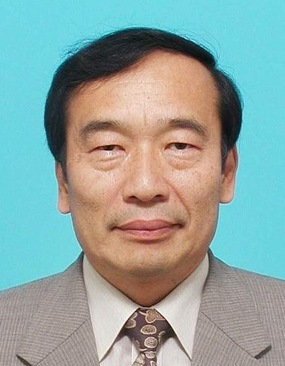
Eimitsu Tsurumaki
Director, IAC,
Inf. Networking Gr.
The IAC News has reached its 50th issue this month since its launch July 2012. Along with the development of IAC activities, we have increased the number of subscribers to the IAC News at home and ovreseas, and updated them about IAC’s internaiotnal activities and others every month for these four years. When you look through the back numbers of the IAC News, you will notice that we have developed and diversified its contents over the years.
We set our goal high for the IAC News. Both “Informaiton” and “intelligence” are translated into the word “joho” in Japanese, but we hope to offer not simply “informaiton”, but “intelligence” to the subscribers with the IAC News. While the word “information” may mean any piece of information floating around, the “intelligence” may indicate the ability of human beings to understand and make a decision.
It is a challenge for us the “Joho” Group to grow to be the IAC’s brain and contribute to IAC’s further development. We will make every effort to achieve the goal. Please watch our progress.
Quick Report on the 2016 Kumamoto Earthquake
On April 14, 2016, a magnitude 6.5 earthquake occurred, centered in Kumamoto Prefecture and registering the maximum intensity of 7 on the Japanese scale in Mashiki Town. On April 16, there was another earthquake, with a magnitude of 7.3, which registered an intensity of 7 in Mashiki Town and Nishihara Village, and caused enormous damage throughout Kumamoto Prefecture. The Japan Society of Civil Engineers (JSCE) sent an emergency investigation team from the West Branch and investigation teams from the Earthquake Engineering Committee and the Geotechnical Engineering Committee to assess the damage. This report provides a quick summary of the investigation results.
Damage to bridges
Damaged bridges were found not only in Kumamoto Prefecture but also in Oita Prefecture, which shows that the strong motion earthquakes caused widespread damage. In the mountainous regions; however, bridge damage was caused by ground deformation as well as by strong seismic motion. On the Kyushu Expressway, which runs through plains, the elevated bridges that had not been reinforced against earthquakes were severely damaged, and overbridges collapsed onto the expressway following the main shock (Photo 1). In the mountainous regions, major damage such as breakage of laminated rubber bearings and displacement of beams from the bearings occurred on several bridges with displacement constraints based on the specifications revised after the Hyogoken-Nanbu Earthquake, and an arch bridge was completely destroyed by a large-scale slope failure.
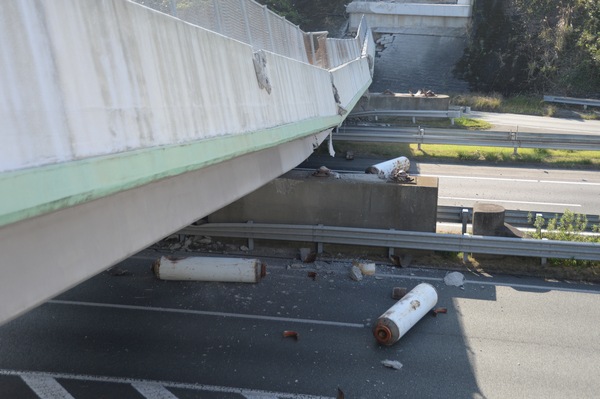
Photo 1: Collapse of Furyo Overbridge onto the Kyushu Expressway
Damage status of stone bridges in Kumamoto Prefecture and the ruins of Kumamoto Castle
The earthquake devastated many of the stone bridges in Kumamoto Prefecture and the ruins of Kumamoto Castle, which are designated as cultural property. On the Tsujunkyo Bridge (Photo 2a), cracking of the covering soil between the water pipes, displacement of the joint parts of the water pipes and outward swelling of the upper part of the stone wall occurred. Other examples of the damage to stone bridges include that of Shimotsuru Bridge (Photo 2b), in which half the stone wall and bridge railings collapsed. As shown in this case, stone bridges typically suffered collapse, swelling of stone walls and falling of bridge railings. In the ruins of Kumamoto Castle, 23 turrets and gates including Kitajuhachiken-Yagura, Higashijuhachiken-Yagura, and Nagabei, which are designated as nationally important cultural property, and stone walls were damaged; the number of damaged locations reached as many as 50.
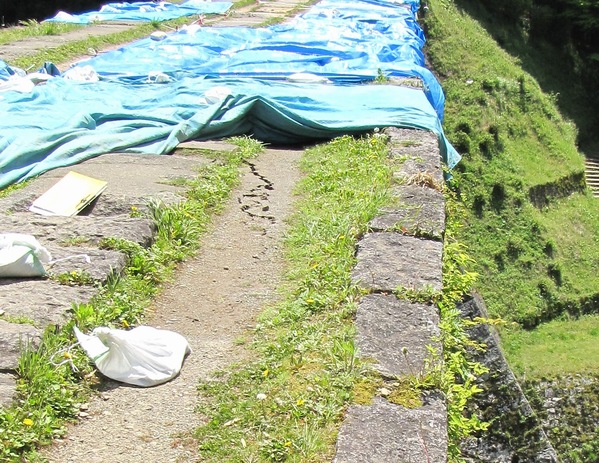
Photo 2a: Deformation of the upper part of the stone wall of Tsujunkyo Bridge
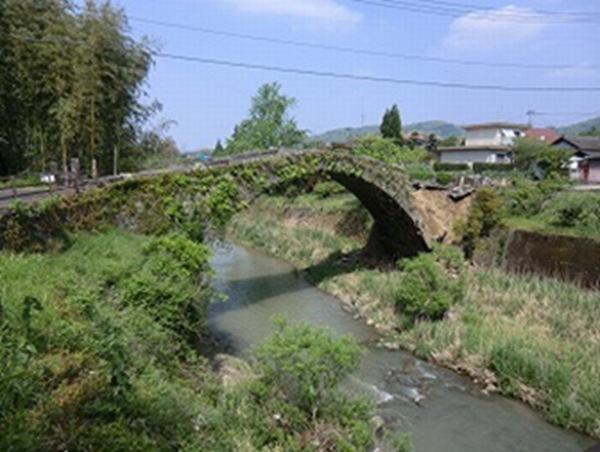
Photo 2b: Collapsed masonry wall of Shimotsuru Bridge (Uki City)
Landslide disasters
Many of the landslide disasters in the 2016 Kumamoto Earthquake were characterized by ground collapse at areas where the surface layer consisted of volcanic ash soil. The following are typical examples. (1) Large-scale slope failure (deep-seated landslide) (Photo 3): Since the upper part of the area where the collapse occurred was steeply inclined, the massive vibration hitting that part caused cracking, leading to the collapse of the surface layer. It is considered that this collapse caused the collapse of the weathered lava layer that is believed to have supported the surface layer, thus resulting in the large-scale collapse. (2) Collapse of a slope with a gradient of less than 10° (Photo 4): When the massive vibration hit the very weak stratum formed through the argillation of pyroclastic fall material beneath a thick volcanic ash soil layer, the weak stratum became fluidized, which resulted in a large-scale landslide. This was the collapse of volcanic ash soil layers and pyroclastic fall material. (3) Surface failure: As shown in the surface failure on Mt. Eboshidake, in the area around the central cone, volcanic ash soil layers of the steeply inclined slope collapsed in a continuous manner. Part of the collapsed sediment was deposited in mountain streams, causing mud avalanches. (4) Damage and collapse of roads (Photo 5): On the road leading to the Aso Choyo Ohashi Bridge, road damage and collapse occurred. This road collapse appears to have been caused by the collapse of volcanic ash soil on lava, since the inclination of the collapsed part is gentle. Also, collapse and damage of the road constructed in the steeply inclined area near Aso Choyo Ohashi Bridge were remarkably severe. Since deformation such as cracking has developed in some places of the slopes in the areas hit by the intense quakes, it is necessary to stay on the alert against the occurrence of slope collapse.
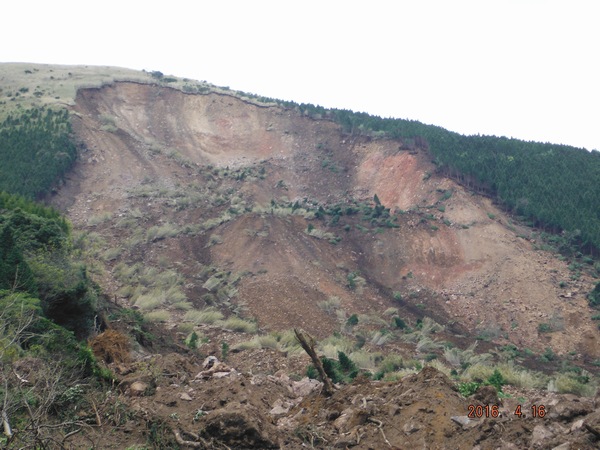
Photo 3: Large-scale slope failure that caused the collapse of Aso-Ohashi Bridge
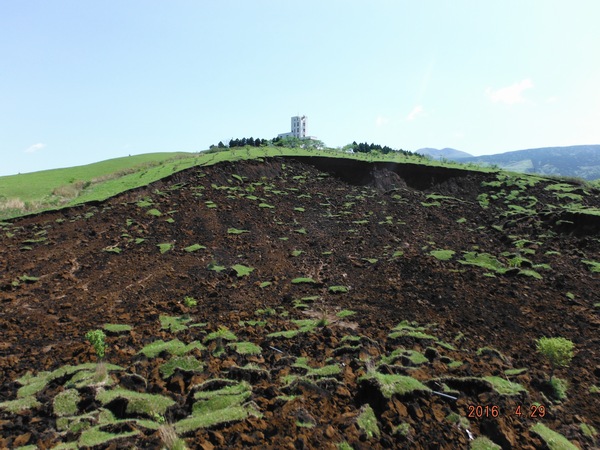
Photo 4: Landslide that occurred on a gently inclined slope
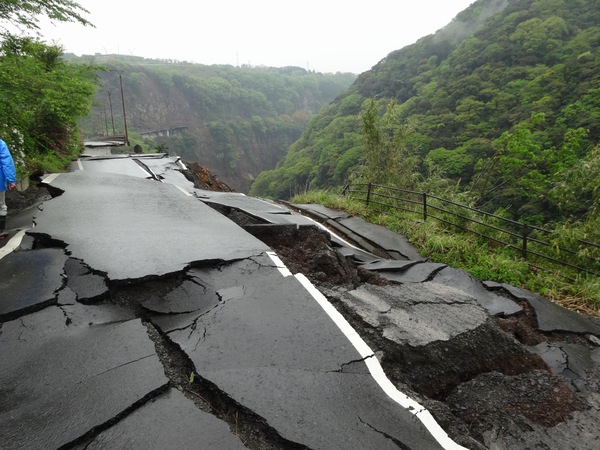
Photo 5: Damage and collapse of the access road connected to the Aso Choyo Ohashi Bridge
Lifelines
The earthquakes on April 14 and 16 also caused severe damage to lifelines such as electricity, gas and water supply. About 200,000 households temporarily lost power, and as of the night of April 16, about 80,000 households were still without power, which was recovered by April 20. Regarding water supply, up to 370,000 households were without water until one week later when water could be supplied to 90% of the households; however, about 4,000 households were still without water as of May 10. City gas supply was suspended to about 100,000 households, but was gradually restored from April 20 and then completely restored by the end of April. In the 2016 Kumamoto Earthquake, the number of evacuees reached 180,000, which decreased slowly due to the recurring aftershocks. However, as shown in Fig. 1, with the recovery of lifelines including water, gas and electricity supply, the number of evacuees gradually decreased, highlighting the importance of seismic retrofitting of lifelines.
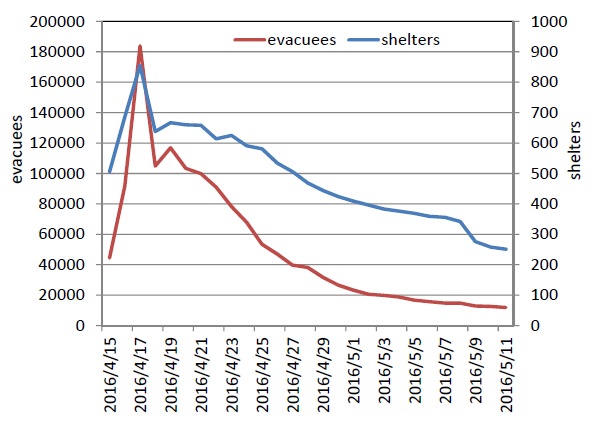
Fig. 1: Changes in the number of evacuees and shelters
【This report is an English translation of a summary of the article written by Prof. Taiji Matsuda, Leader of the Investigation Team of the West Branch, et al. appeared in the July 2016 issue of JSCE Magazine. The summary is also made by the authors themselves. We would like to thank them for their cooperation.】
Report on JSCE-MACE Joint Seminar in Mongolia
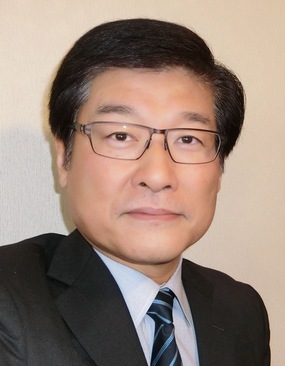
Dr. Yutaka Nakamura
Institute of Technology, Shimizu Corporation
1. Background and Purpose
JSCE International Activities Center organizes several international exchange groups which are developing a partnership with each assigned foreign country. Professor E. Yamaguchi of Kyushu Institute of Technology, the leader of the Mongolia group, cooperates with Mongolia Association of Civil Engineers (MACE), and held seminars to introduce Japanese construction technologies in the past two years.
Responding to the request for a seminar on earthquake-proof building design, seismic evaluation and strengthening, analyses and shaking table tests in Japan, JSCE-MACE Joint Seminar was held in Mongolia as follows.
2. Date, Place and Participants
(1) Date: October 14, 2016, 9:10 – 12:40
(2) Place: Seminar room of Construction Development Center, Ministry of Construction and Urban Development of Mongolia, Ulaanbaatar, Mongolia
(3) Speakers and Presentation Titles: Dr. Yutaka Nakamura, Chief Research Engineer, Institute of Technology, Shimizu Corporation , ‘Earthquake-proof Building Design in Japan from the present to the future’
(4) Number of Participants: 104 in total, made up of:
57 construction companies, 20 governmental institutions, 13 universities, 11 civil engineering consultants, and 3 architectural design firms
The workshop was a fruitful meeting for the author in regard to not only listening to valuable speeches, but also getting to know so many young researchers and doctoral students from Taiwan. The author believes that new relationships affirmed between Japanese and Taiwanese researchers will support the organizers to develop the workshop each time.
3. Contents of the Seminar
Following the opening remarks by Mr. D. Zanabazar, Director at Industry Policy Implementation and Coordination Department and Prof. E. Yamaguchi, a technical lecture on Japanese earthquake-proof building design was delivered by Y. Nakamura in English for 75 minutes in the first part and 60 minutes in the second part, including interpretation from English into Mongolian. The technical lecture covered earthquake hazard evaluation, business continuity plan, seismic static lateral force, seismic evaluation and strengthening methods, seismic isolation and response control methods, and a shaking table facility. The speaker explained those topics by using motion videos and shaking building models. In a Q&A session, he responded to the questions about the cost-effectiveness of seismic isolation and response control methods, maintenance costs, earthquake countermeasures for precast concrete structures, and designing earthquakes for high-rise buildings. Finally, Mr. B. Gunbold, President of MACE, gave a closing address.
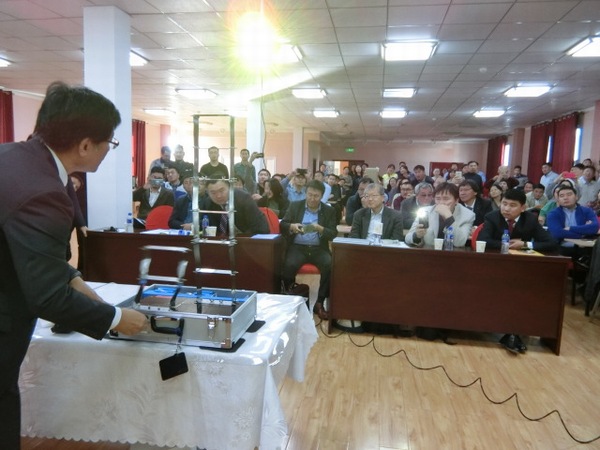
The author explains resonance by using shaking building models
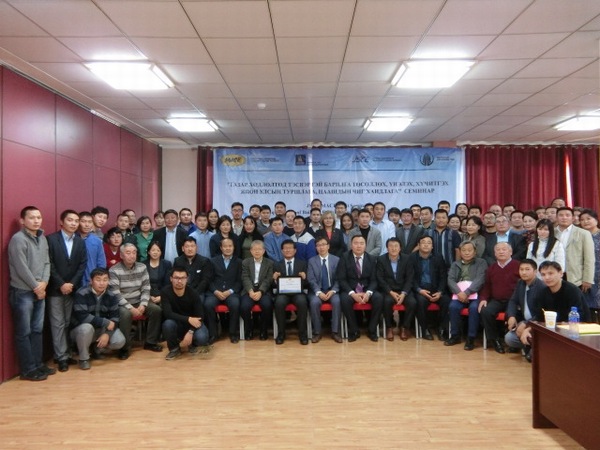
The Participants of JSCE-MACE Joint Seminar
Introduction of Tunnel Engineering Committee
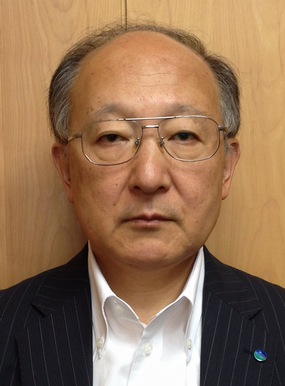
Dr. Koh Kimura
Chair of Tunnel Engineering Committee
Tunnel Engineering Committee literally is specialized in tunnel engineering. It is not usual that a committee has a name of a specific structure. In other words, it may be said that there are various issues and challenges associated with tunnel construction.
Tunnel Engineering Committee was established in February 1962, and committee members assigned themselves to publish standard specifications for tunneling as the first task. In those days, the Japanese society entered in the period of rapid economic growth; several infrastructure projects were implemented around the country, and demands for developing design codes, standards, and guidelines for tunneling increased accordingly. After the peak, tunnel constructions have been decreasing, and demands have changed for the proper operation and maintenance of existing tunnels, which are considered infrastructure stock, besides the revision of standard specifications for tunneling.
In order to respond to those demands, the Tunnel Engineering Committee conducts various activities such as field surveys, researches, planning, designs, constructions, operation and maintenance in order to examine and solve issues on tunnels and tunneling.
Following are some of the activities:
Technical Subcommittees
Technical subcommittee sets up groups to effectively deal issues coming up with the times in the tunnel engineering field. The groups’ reports are published in the form of “Tunnel Library.” The Tunnel Library widely is referred to among tunnel engineers and researchers, which has been published up to No. 29 so far. The subcommittee has conducted studies and researches focusing on tunnel maintenance, design and construction technology, risk management and environmental impact currently.
Standard Specifications for Tunneling
Standard Specifications for Tunneling, which is the first assignment of the Tunnel Engineering Committee, was established in 1964. Since then, that committee has updated the standard specifications almost every ten years to keep up to date with the progress of tunneling technology. The latest standard specifications is published in 2016, and has been used as a reference among tunnel engineers and researchers. The summary of standard specifications is published in English. The committee now is translating summary of the latest one. In the meantime, the committee receives queries about the availability of the latest one, and requests for translation permission overseas, Last year, for example, the committee was contacted by a Chinese publishers to request permission to translate it into Chinese.
Tunnel Engineering Research Seminar
Tunnel Engineering Seminar, the first of which was held in 1991, is an opportunity for tunnel engineers to discuss their researches and projects and to exchange ideas and current information of tunnel technology with each other. In that seminar, over 200 tunnel experts participate in, and around 80 papers are presented. Also the committee has published “Journals of Tunnel Engineering” since 2004, which is another opportunity to introduce new ideas, projects and technologies, and by doing so, made contribution to the progress of tunneling engineering.
Updates
- The summary of feature articles in the December 2016 issue of the JSCE Magazine is available on the JSCE website.
http://www.jsce-int.org/pub/magazine - Five projects introduced in the booklet “TRANSFER OF CIVIL ENGINEERING TECHNOLOGY IN SERVICE” issued at the time of the 100th year anniversary of JSCE can be viewed on the JSCE Website.
http://www.jsce.or.jp/e/archive - Concrete Committees International Newsletter No.47
http://www.jsce.or.jp/committee/concrete/e/newsletter/newsletter47/index.html - Journal of JSCE
The Journal of JSCE is the collection of research papers which can be viewed on the JSCE website.
https://www.jstage.jst.go.jp/browse/journalofjsce - Disaster Fact Sheet
http://committees.jsce.or.jp/disaster/ - IAC Students and Alumni Network
http://www.jsce-int.org/IAC_network
IAC News Subscription
The IAC News is one of the communication tools to share information and ideas with the members. We would like to invite you, your friends and colleagues to join the communication and to subscribe the IAC News. Please register online: (http://www.jsce-int.org/node/150). We look forward to meeting you.
